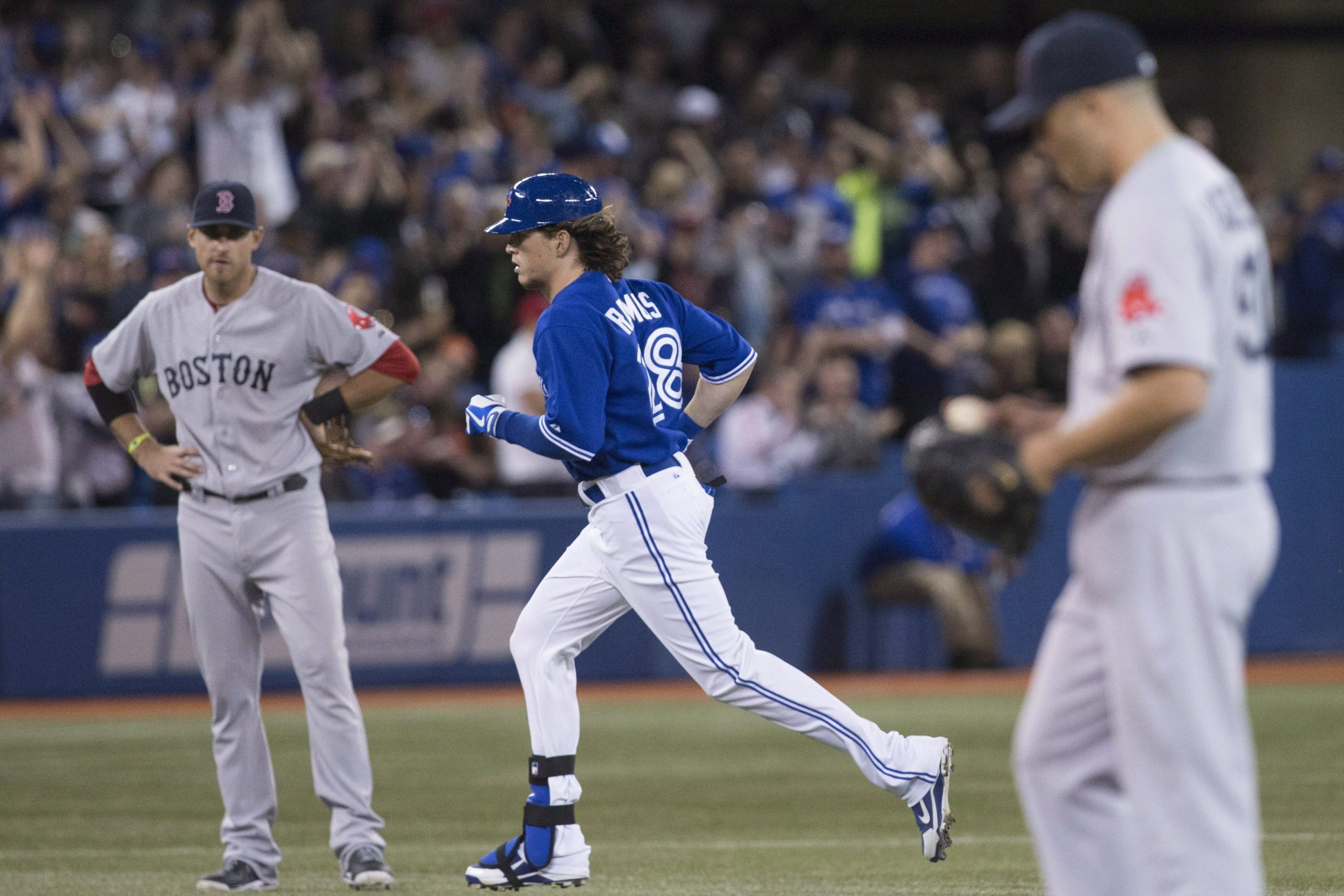Colby Rasmus said last week he’d rather hit fastballs than breaking balls. Fastballs, Rasmus reasoned, are easier to handle than off-speed pitches even if they’re approaching 95 m.p.h.
“Definitely,” he said. “That doesn’t matter. I don’t usually mind it. I usually like it when guys throw hard. I’m a fastball hitter, so that’s the one I’ve got to look for.”
Be careful what you wish for.
The Toronto Blue Jays centre fielder has seen, on average, 93 m.p.h. fastballs from opposing pitchers so far in 2013. If that sounds like a lot of velocity, it’s because it’s two m.p.h. faster than the MLB average of 91.1 m.p.h.
Of the 207 players who have qualified for the batting title early on this year, only one player has seen more velocity than Rasmus. Former Blue Jays outfielder Alex Rios has seen fastballs that average 93.2 m.p.h.
“You go out there looking to stay on the fastball and adjust from there,” Rasmus said.
So far the approach is working, as all three of Rasmus’ home runs this year have come on hard fastballs.
He homered off of a 95 m.p.h. pitch from Indians reliever Cody Allen, a 93 m.p.h. pitch from Red Sox reliever Alfredo Aceves and a 94 m.p.h. pitch from Tigers reliever Joaquin Benoit.
Rasmus isn’t the only Blue Jays player facing hard fastballs. Melky Cabrera and Emilio Bonifacio both rank among the top ten in MLB in opponents’ velocity.
As a team, the Blue Jays have seen more velocity than any of the other 29 MLB clubs. The average fastball thrown by a pitcher facing the Blue Jays in 2013 checks in at 92.5 m.p.h.
The Blue Jays faced some hard throwers during the first month of the season. Jon Lester (average fastball of 92.7 m.p.h.), John Lackey (92 m.p.h.), Felix Doubront (92.1 m.p.h.), Justin Masterson (91.9 m.p.h) and Anibal Sanchez (91.5 m.p.h) are among the hard-throwing starters who have pitched against the Blue Jays so far in 2013.
Like many early-season trends, this one will become less pronounced as the season progresses. In 2012 the gap between the team that faced the hardest fastballs (New York Yankees, 92.1 m.p.h.) and the team that faced the slowest fastballs (San Diego Padres, 90.9 m.p.h.) was barely more than one mile per hour.
Even so, some Blue Jays hitters should expect to continue seeing hard fastballs. Jose Bautista led MLB hitters last year, facing an average fastball velocity of 92.5 m.p.h. Encarnacion ranked 21st among MLB hitters in 2012, when the Blue Jays ranked 10th as a team.
Why do some hitters face harder pitches than others? Opposing managers are reluctant to let a soft-tosser face a perceived power threat late in games. It’s also possible pitchers gear up while facing certain hitters. These differences may not be noticeable to the naked eye, but can add up over the course of a six-month season.
So while Blue Jays hitters probably won’t see quite as much velocity between now and the end of the season, the trend could easily persist to some extent. It’s a good thing for Colby Rasmus that he likes facing the hard stuff.
Pitch data via FanGraphs.com and MLB.com.

